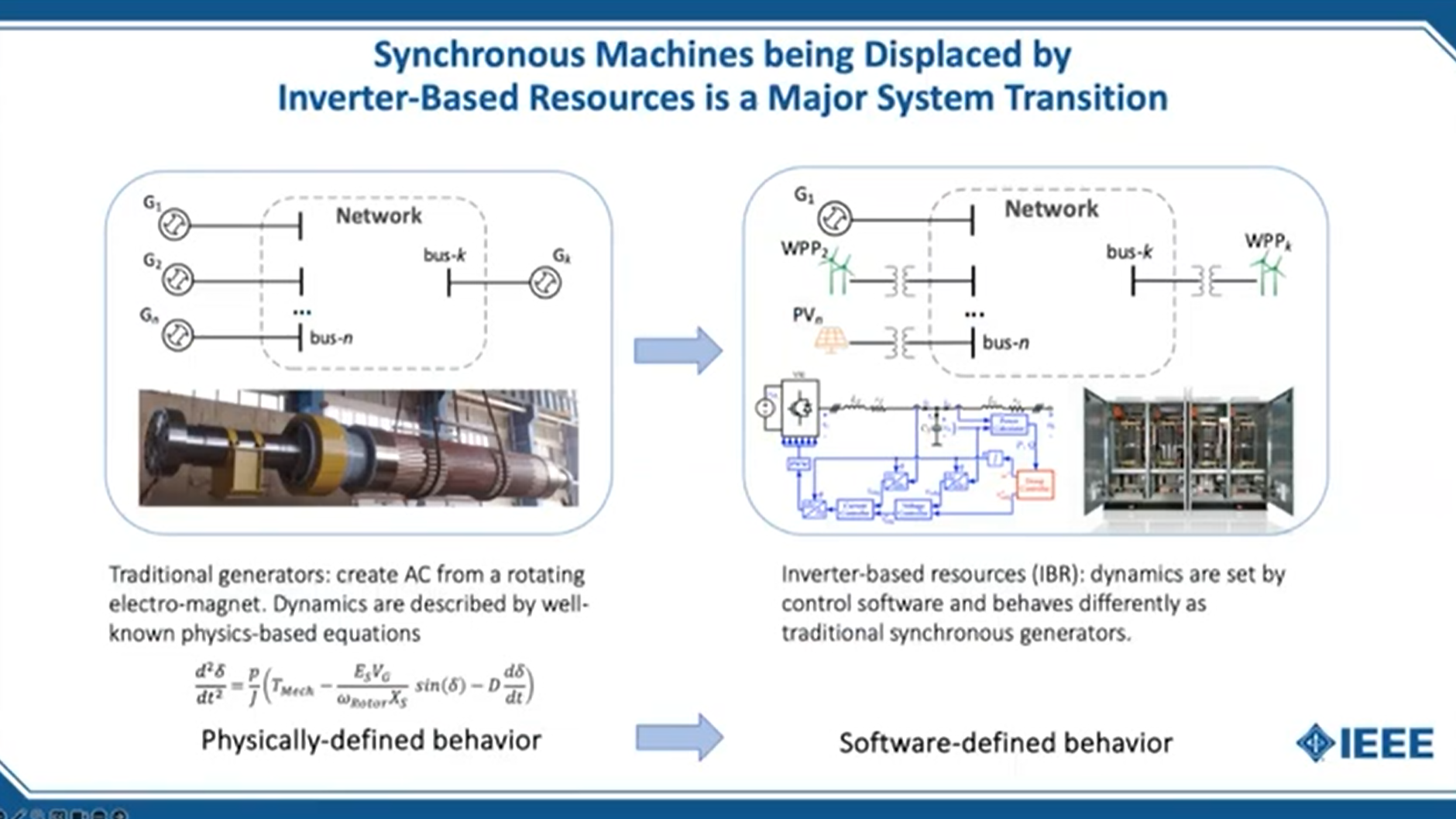Featured Articles Video October 24, 2023

PUBLISHED IN July 2023
Title
Power System Stability With a High Penetration of Inverter-Based Resources
Authors
Y. Gu and T. C. Green
Abstract
Inverter-based resources (IBRs) possess dynamics that are significantly different from those of synchronous-generator-based sources and as IBR penetrations grow the dynamics of power systems are changing. This article discusses the characteristics of the new dynamics and examines how they can be accommodated into the long-standing categorizations of power system stability in terms of angle, frequency, and voltage stability. It is argued that inverters are causing the frequency range over which angle, frequency, and voltage dynamics act to extend such that the previously partitioned categories are now coupled and further coupled to new electromagnetic modes. While grid-forming (GFM) inverters share many characteristics with generators, grid-following (GFL) inverters are different. This is explored in terms of similarities and differences in synchronization, inertia, and voltage control. The concept of duality is used to unify the synchronization principles of GFM and GFL inverters and, thus, established the generalized angle dynamics. This enables the analytical study of GFM-GFL interaction, which is particularly important to guide the placement of GFM apparatuses and is even more important if GFM inverters are allowed to fall back to the GFL mode during faults to avoid oversizing to support short-term overload. Both GFL and GFM inverters contribute to voltage strength but with marked differences, which implies new features of voltage stability. Several directions for further research are identified, including: 1) extensions of nonlinear stability analysis to accommodate new inverter behaviors with cross-coupled time frames; 2) establishment of spatial–temporal indices of system strength and stability margin to guide the provision of new stability services; and 3) data-driven approaches to combat increased system complexity and confidentiality of inverter models.